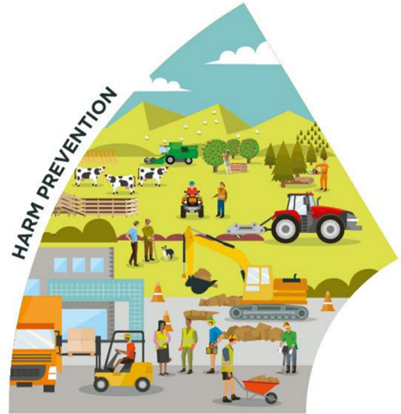RISK. What is WorkSafe NZ saying?
 Recently, in relation to forklift deaths, WorkSafe NZ CEO Nicole Rosie said:
Recently, in relation to forklift deaths, WorkSafe NZ CEO Nicole Rosie said:
Any business using forklifts should have them high on their critical risk list, put appropriate controls in place and monitor them for effectiveness.
It is not good enough to put some lines of paint on the ground and leave it at that. Businesses must check that their controls are working and further.
It's important to involve workers in the risk analysis as they're the ones who most often identify these risks before they cause a serious injury or a death.
Managing Critical Risks in Forestry!
While it is true that managing risk is a new way of thinking, it is clear from these remarks that window dressing our old style hazard management is not the evidence based targeting of critical risk that Rosie is looking for.
The recent training course, Managing Risk at Forestry Work sites helped us to understand the difference between a hazard and a risk. Looking at the forklift, it is actually the hazard! The risk is that the forklift will run over a person and this is the risk we must manage!
Speaking of risk management, have we:
- Looked at our operation with fresh eyes to identify all of our critical risks?
- Produced a list of critical risks? (This list depends on our operation type)
- Considered all of the situations (events, causes and triggers) where the risk increases e.g. unauthorised people inadvertently walking into an active machine zone?
- Worked our way through the hierarchy of controls, including all of the prescribed management techniques for our critical and particular risks?
- Demonstrated that we (and our workforce) are properly focused on our risks e.g. by producing and then regularly referring to a Critical Risk Management Map?
- This includes the relevant Particular Risks as identified in the General Risk and Workplace Management Regulations 2016.
View this article in Safety Bulletin 108
